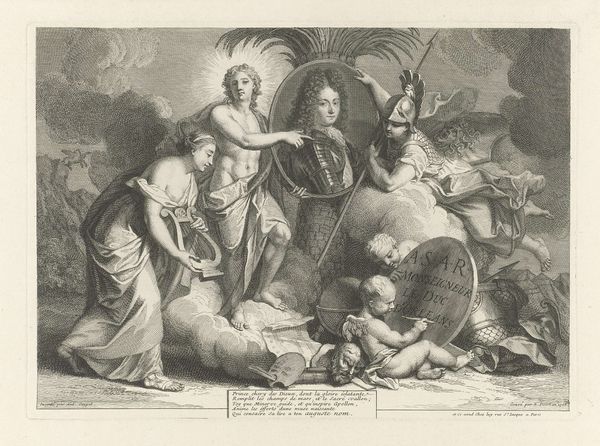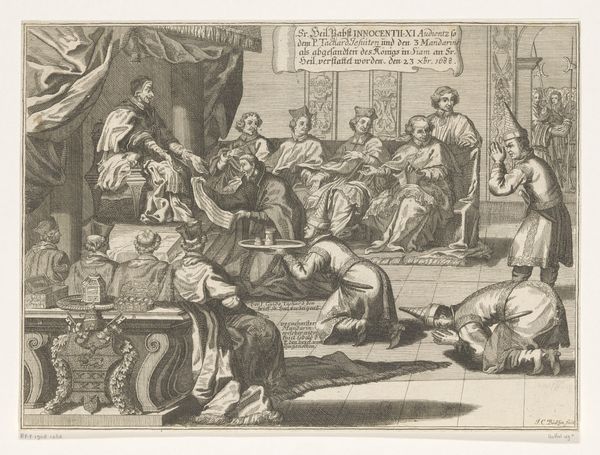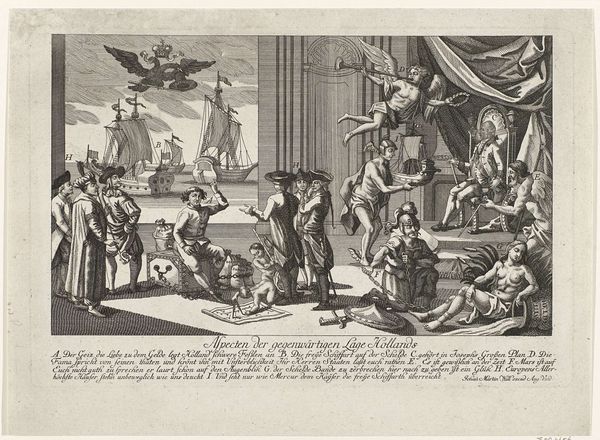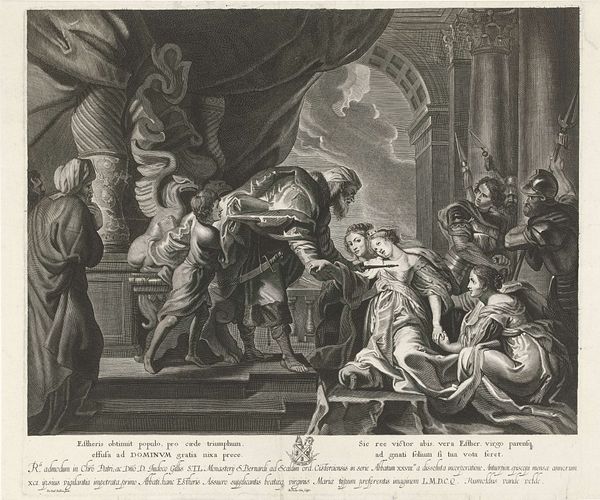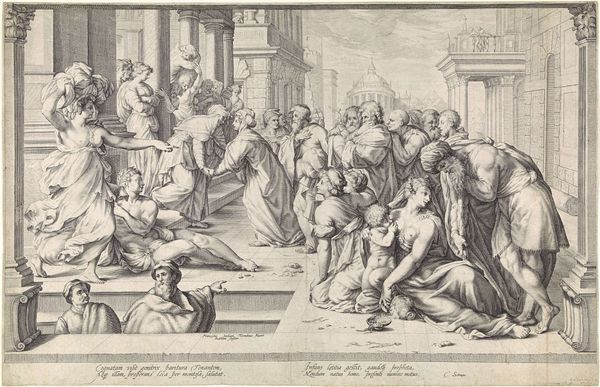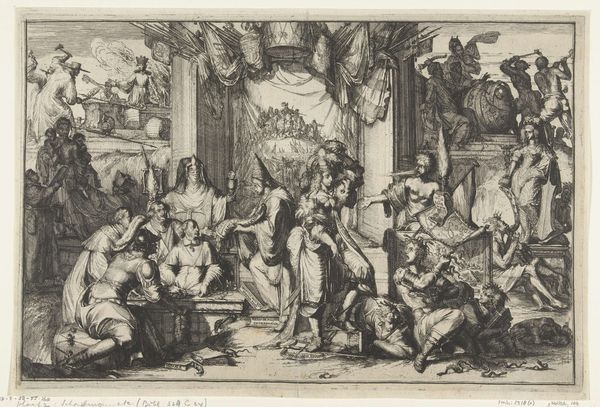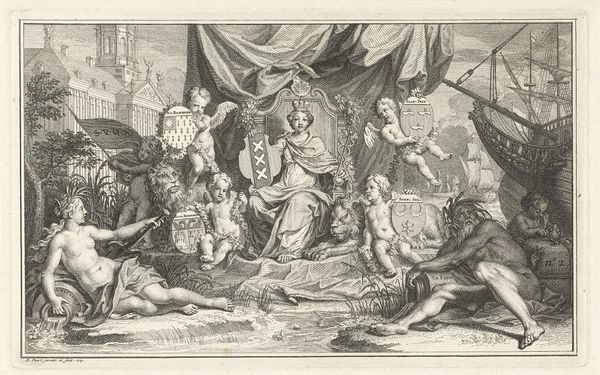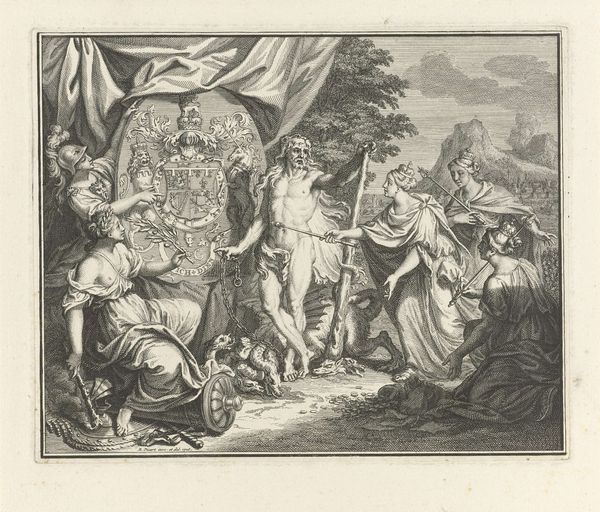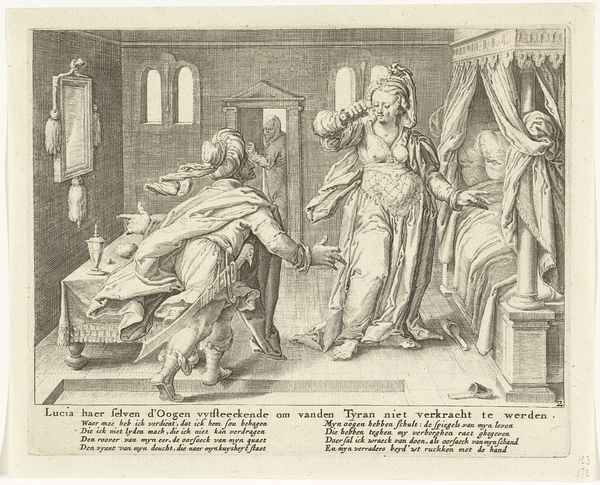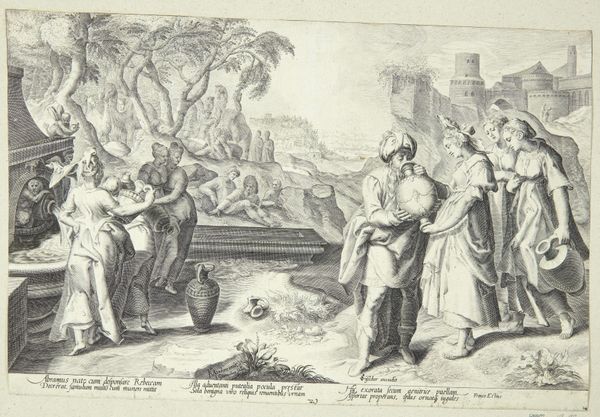
Allegorie op de Franse economie met het portret van Filips II, hertog van Orléans 1720
0:00
0:00
bernardpicart
Rijksmuseum
print, engraving
#
portrait
#
allegory
#
baroque
# print
#
old engraving style
#
history-painting
#
engraving
Dimensions: height 140 mm, width 200 mm
Copyright: Rijks Museum: Open Domain
Curator: This engraving, "Allegory on the French Economy with the Portrait of Philippe II, Duke of Orléans," created by Bernard Picart in 1720, offers a fascinating glimpse into economic anxieties of the time. Editor: It’s immediately striking—all those figures swirling around the central portrait. It has an almost frenetic energy, typical of Baroque sensibilities, though constrained by the print medium. Curator: Yes, the medium itself is key here. Engravings like this were mass-produced, a form of visual communication widely distributed to comment on and shape public opinion about economic conditions and political figures like Philippe II. The sharp lines belie an industrial quality related to early modern production, unlike singular paintings intended to last centuries untouched. Editor: The imagery is compelling. Mercury, with his caduceus, hovers above a rather regal-looking Philippe. And below him, figures that seem to represent France, Africa, Abundance, all seemingly weighed down, pointing to different interpretations, no? I see wealth juxtaposed with poverty. What does it say about the economy if wealth and abundance seem dependent on prostrated peoples? Curator: Exactly! The inclusion of figures symbolizing continents highlights the interconnectedness of the French economy with global trade routes and, more critically, its reliance on exploitation and the subjugated labor involved with expanding into the colonial arena. Editor: It certainly places emphasis on Philippe's role in the national drama. Note also the cherubic figures. Are they innocent observers or are they complicit, partaking in a national narrative of supposed glory? Curator: A question perhaps directed to the consumers and viewers of Picart's engraving at the time of its creation, as engravings played such a central role in spreading narratives. Each sheet was a conscious choice to either promote, demote, question, and critique the circumstances through which France, or the colonial world at large, found themselves entrenched. The social agency afforded by the materiality is significant. Editor: It makes you wonder how those seeing it interpreted the interplay of its visual symbols. It presents a dense commentary with carefully positioned components and an implied value-based meaning related to economy, prosperity, and class. Curator: Looking at the engraving now offers the opportunity to not just assess a unique piece, but also understand something critical about France’s perception of the self through a specific era. Editor: Right. This artwork definitely urges the contemporary viewer to consider both how value systems solidify but also why symbols may fade away with new and subsequent narratives that become more resonant in society.
Comments
No comments
Be the first to comment and join the conversation on the ultimate creative platform.

